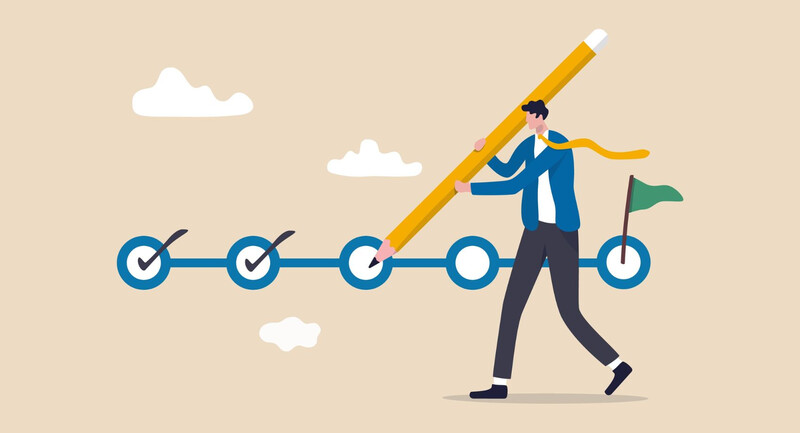You probably know that zombies have a fondness for brains. What you may not know is that zombies also like theories about how the brain works. Zombie Learning Theories, as researcher Bryan Goodwin has explained, are ideas about how we learn that have been killed (i.e., thoroughly debunked by research), yet still roam our classrooms. These misconceptions make it harder for students to learn since they counteract the reality of the learning process. Let’s meet some of the most common learning zombies so we can recognize them for what they are when they appear.
Zombie #1: Learning Styles
Have you ever heard someone say they’re a kinesthetic or auditory learner? That’s this zombie at work. While the theory that students have specific learning styles has long been debunked, it still haunts many classrooms and lecture halls. It’s true that we have individual preferences for learning activities, but our brains are not wired differently to learn better from one style or another. Even education researcher Howard Gardner (whose theory of multiple intelligences contributed to the creation of this zombie) has stated that grouping students by learning styles is not a helpful practice.
Sources:
- Furey, W. (2020). The stubborn myth of “learning styles”. Education Next 20(3).
- Pashler, H., McDaniel, M., Rohrer, D., & Bjork, R. (2008). Learning styles: Concepts and evidence. Psychological Science in the Public Interest, 9(3), 105–119.
Zombie #2: Left Brain vs. Right Brain
This zombie says that we have two sides of our brain, and one is more dominant. Those who use the right side of their brain are more creative, while those who use the left side of their brain are more analytical. A related zombie theory is that we only use 10 percent of our brains. None of this matches up with neuroscience. Humans use 100 percent of their brains all the time. And, while each part of the brain does play a different role, our level of creativity or analytical thinking are not determined by this division of labor. Whether you’re an artist or an engineer (or a little bit of both), your brain will look and behave very much the same. And if you want to develop creative or analytical thinking skills, practice is likely the key!
Sources:
- Shmerling, R. H. (2024, March 24). Right brain/left brain. Harvard Health Publishing.
- Boyd, R. (2008, February 7). Do people only use 10 percent of their brains? Scientific American.
Zombie #3: Fill Your Brain
This zombie says that our brain is like an empty bucket you have to fill with information. It uses words like “put this into your brain” or sometimes compares the brain to a hard drive or filing cabinet where you store things. The truth is that the brain doesn’t work like a storage container where you drop bits of information. Instead, our knowledge grows by making connections to things we already know. A better analogy might be to compare the brain to a strip of velcro where new things stick if they have enough hooks to build a connection.
Sources:
- Greene, A.J. (2010, July). Making Connections: The essence of memory is linking one thought to another. Scientific American.
- National Research Council. (2000). How People Learn: Brain, Mind, Experience, and School: Expanded Edition. The National Academies Press.
Zombie #4: 10,000 Hour Rule
This zombie says that if you practice something for 10,000 hours, you will become an expert at it. Aside from being oddly specific, it’s a not-quite-accurate take on a research paper about the impact deliberate practice has on building expertise. Malcolm Gladwell generalized this number in his book Outliers, and the zombie was born. In reality, there’s no hourly threshold where practice automatically confers expertise. While practice is certainly important, it’s effective practice that matters most. If you spend 10,000 or even 10 hours practicing the wrong skills, it will not lead you to become an expert.
Sources:
- Ericsson, K.A., Krampe, R.T., & Tesch-Romer, C. 1993. The role of deliberate practice in the acquisition of expert performance. Psychological Review 100(3)
- Bradley, D. (2012, November 13). Why Gladwell's 10,000-hour rule is wrong. BBC.
Zombie #5: Intense Specialization Is Required for Expertise
This zombie says that you develop expertise by focusing on one skill for as long as possible. It seems intuitive enough; spending more time, with less distraction, on one thing should certainly give you a leg up, right? But this zombie is friends with the Gladwell zombie, and both of them need to be put to rest. It’s true that sometimes people who hyperfocus on one skill become recognized experts in that area. But more often than not, it’s those who have generalized and explored a variety of interests who rise to the top. Developing a range of skills and knowledge is what allows us to innovate, pivot when needed, and find overall success, even in highly specialized fields.
Sources:
- Epstein, D. (2020). Why specializing early doesn't always mean career success [Video]. YouTube. Ted.
- Epstein, D. (2019).Range: Why generalists triumph in a specialized world. Riverhead.
Zombie #6: Multitasking
This zombie often brags about its ability to focus on multiple tasks at once–something it calls multitasking. However, this zombie theory has been dead for a long time. In short, human brains are not able to focus on multiple things at one time. What is actually happening is that our brain is quickly switching from one task to another, but still only focusing on one of them at any given moment. And there’s a real productivity cost with each of the “switches” that makes it harder for our brains to provide focus and attention to any one of the tasks. From a productivity standpoint, it is far better to focus on one activity for a longer amount of time and reduce the amount of switching between activities that our brains have to do.
Sources:
- American Psychological Association. (N.D.) Multitasking: Switching costs.
- Tassone, A., Liu, J.J.W., Reed, M.J., & Vickers, K. (2017). Multitasking in the classroom: Testing an educational intervention as a method of reducing multitasking. ResearchGate.
Zombie #7: Boys and Girls Excel at Learning Different Things
This zombie insists that boys are naturally able to learn certain things more easily than girls and vice versa. In reality, brain development is attributed to environmental and social influences. So, while not accurate from a physiological standpoint, this zombie theory often becomes a self-fulfilling prophecy: if we think boys can’t learn something as well as girls (and therefore don’t expect them to be able to), in the long run their abilities may be reduced. But not because of any cognitive deficiency. Cultural assumptions and practices surrounding boys vs. girls have been shown to have a larger impact on learning than physiology itself.
Sources:
- Jäncke, L. (2018). Sex/gender differences in cognition, neurophysiology, and neuroanatomy. National Library of Medicine.
- Eliot, L. (2016, March). Brain differences in boys and girls: How much is inborn? Scientific American.
Zombie #8: Experts Make the Best Teachers
This zombie says that the greatest experts are naturally the best choice for teaching novices. Unfortunately, research shows that individuals who have developed extensive expertise in a subject over many years may be so removed from their novice days that they struggle to recall the challenges a new learner might experience. In addition, deep experts with a natural gift for a skill or domain may be unable to relate to ever feeling challenged if a skill came to them naturally. Expertise is important in teaching, but someone who has recently attained a skill might actually be more effective at teaching a novice than someone who mastered it long ago. Long-time expert teachers should consider pairing up with more recent learners to understand best approaches for teaching concepts.
Sources:
- Carl Wieman, C. (2007). The "curse of knowledge" or why intuition about teaching often fails.
Zombie #9: Recalling What We’ve Learned Is Easy
Intelligence requires being able to recall the information we need at the right time. But this zombie fools us into believing that everything we’ve ever learned is ready and waiting for us to retrieve. This, unfortunately, isn’t the case. Our brains remember far more than we often give them credit for. (Think how an old photo or a particular smell can bring back very detailed but long “forgotten” memories that weren’t actually forgotten at all.) But retrieving the substance of something we’ve learned is a difficult task for the human brain. Retrieval of knowledge requires deliberate practice. As we think about teaching, we may need to balance the amount of time we spend presenting new information with the amount of time we help students develop strategies for retrieving the key information they’ve learned when and where they need it.
Sources:
- Center for Teaching and Learning. (N.D.) Using retrieval practice to increase student learning. Washington University.
- Agarwal, P. (2020, May). Retrieval practice: Power tool for lasting learning. Educational Leadership 77(8).
Illustrations by Edwin Ouellette








